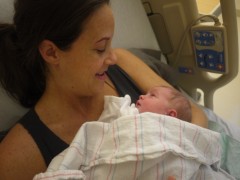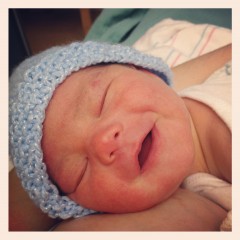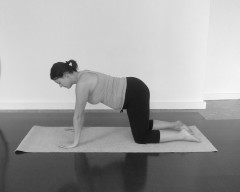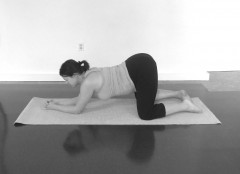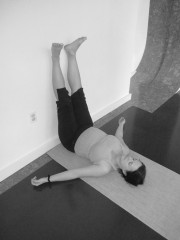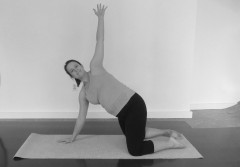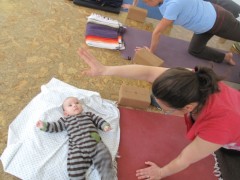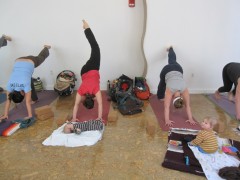I was at my new mom’s group today, and here’s the first thing to know – everyone has such different experiences in pregnancy, labor and birth, and postpartum! We all had different experiences in each phase of this childbearing year. So, though I teach postnatal yoga, going through the experience and listening to others reaffirms that we each have to go at our own pace.
Here’s what I’ve learned from my yoga practice in the first two weeks postpartum. Remember, this is me, and your experience after giving birth will be different:
1) For some period of time, you will wonder if you’ll ever feel normal again.
When I first stood up after giving birth, I thought my hip was displaced, my hamstring was pulled and all my nerves from the waist down were on high voltage. After a few minutes, things settled down, but it’s a crazy experience your body has, even if it’s designed to do this!
For the first week after giving birth, I felt like I was twice my age! I was so creaky and cranky in my muscles and joints. I stayed in bed a lot, walked a little, and didn’t do a lot of yoga asanas (see what I did in #2 below). By the second week, I felt like myself, just extra stiff. I added simple asanas to my yoga routine, like shoulder stretches. Now entering the third week, I feel totally normal, and my yoga practice is coming back to normal. Besides intensive core work, I can do the basics of most any pose – inversions, twists, back strengtheners, hip openings etc.
2) It’s all about moola bandha and uddiyana bandha.
If you’re not an experienced yogini, these might be foreign terms to you. The bandhas are a bit complex to explain in words (and they’re not easy to teach either), but these two techniques are essential to start practicing postpartum! Moola bandha is essentially an engagement (or lift) of your pelvic floor, and uddiyana bandha is essentially engaging you midsection abdominals. My primary yoga in the first week was feeling these two “locks,” or bandhas. They are the weak links after going through pregnancy and then giving birth (even if you don’t have a vaginal birth, both are still weakened).
3) Many people experience a euphoric state for a few weeks, but watch out for the crash!
You may think you’re superwoman the first week or two! Watch out – you have to rest or else you’ll crash. We have hormones that get us through the first few weeks, but after that, you need to have some sleep and nutritional reserves built up.
There’s been a few days where I’ve planned too much, and it’s made me AND Yona (and my husband Gadi) cranky. So I’m getting better at acknowledging limits – 1-2 guests per day visiting, and for a short period of time only. And for now, as we’re starting to venture out of the house, I’ve realized only 1 outing per day. It’s been hard to stick to this “rule,” but it pays off. My midwife says that the number 1 thing we can do to heal after birth is to rest. It’s so hard to give yourself, but in the long run, it pays off.
4) Additional non-yoga care has been helpful.
I’ve used a belly band and done some uterine massage to help settle my organs (an extension of uddiyana bandha). I didn’t use stairs for a whole week after birth to heal my pelvic floor (an extension of moola bandha). I can go into more detail about these things in a later post if anyone’s interested.
A little splurge could be great too! I cannot wait to get a pedicure – it’s not going to heal my body, but it will help me feel like my normal self again! Massage, going out to eat, shopping, going to the beach. Try to find something to do in the first 2 months that help *you* feel like *you* again!
——-
When I get back to teaching postpartum yoga, I will be so excited to have gone through this experience! We’ve always focused a lot on the pelvic floor and the abdominals in class (along with sore backs and shoulders). But having experienced it first-hand now, I can truly say that postnatal yoga makes a huge difference.
I can feel after two weeks that my abdominals are coming together – they’re looking good too! My pelvic floor is strong and supporting me and my organs (I’m not ready to go jogging yet, but that will come in time). Though I’m still stiff in the legs and shoulders, I know with regular practice, I’ll loosen up again.
What would I do without yoga? It’s such a blessing, time after time! I’ll keep you updated on my progress as I continue on this postpartum journey.
Namaste,
Barrett
